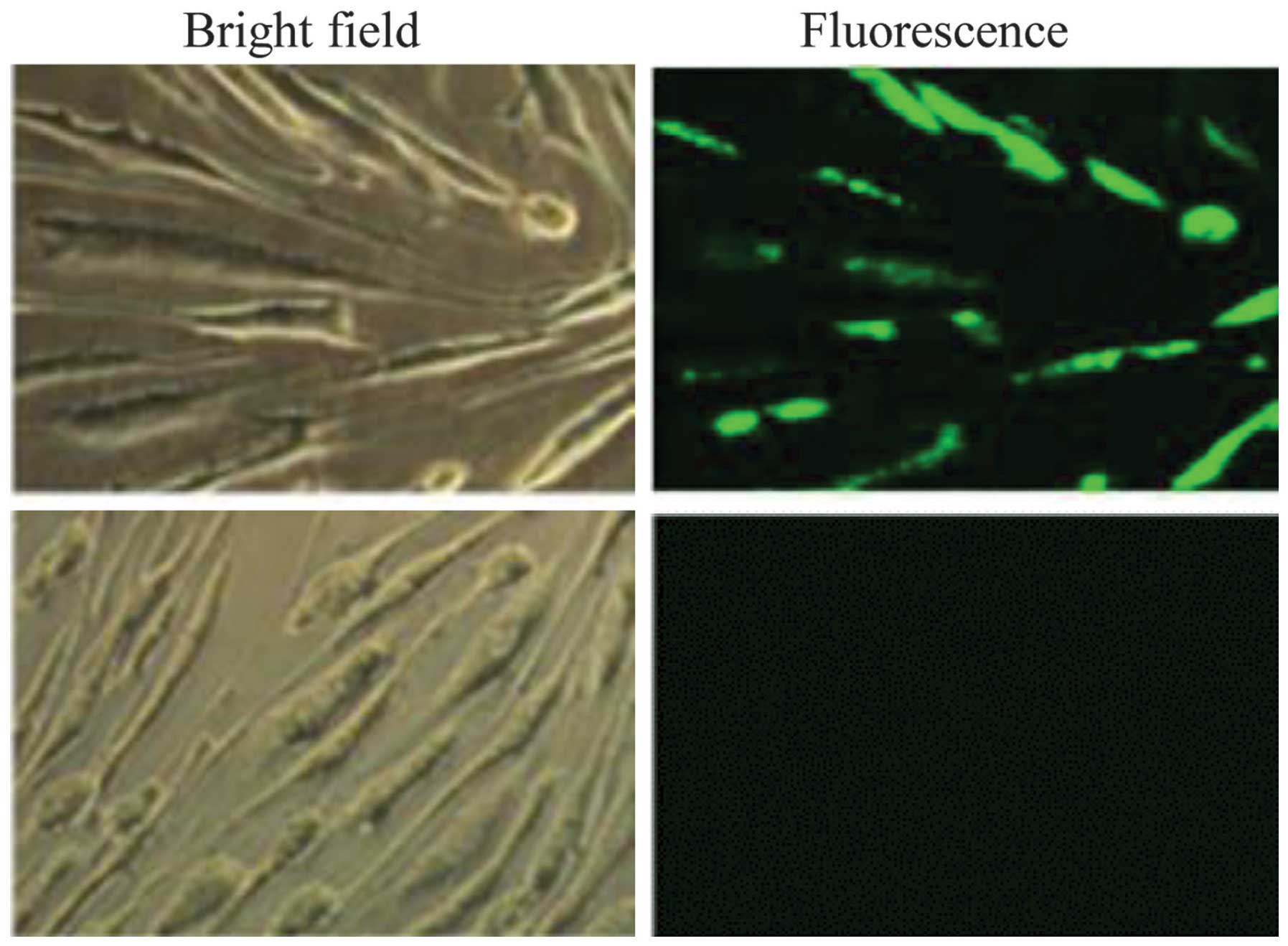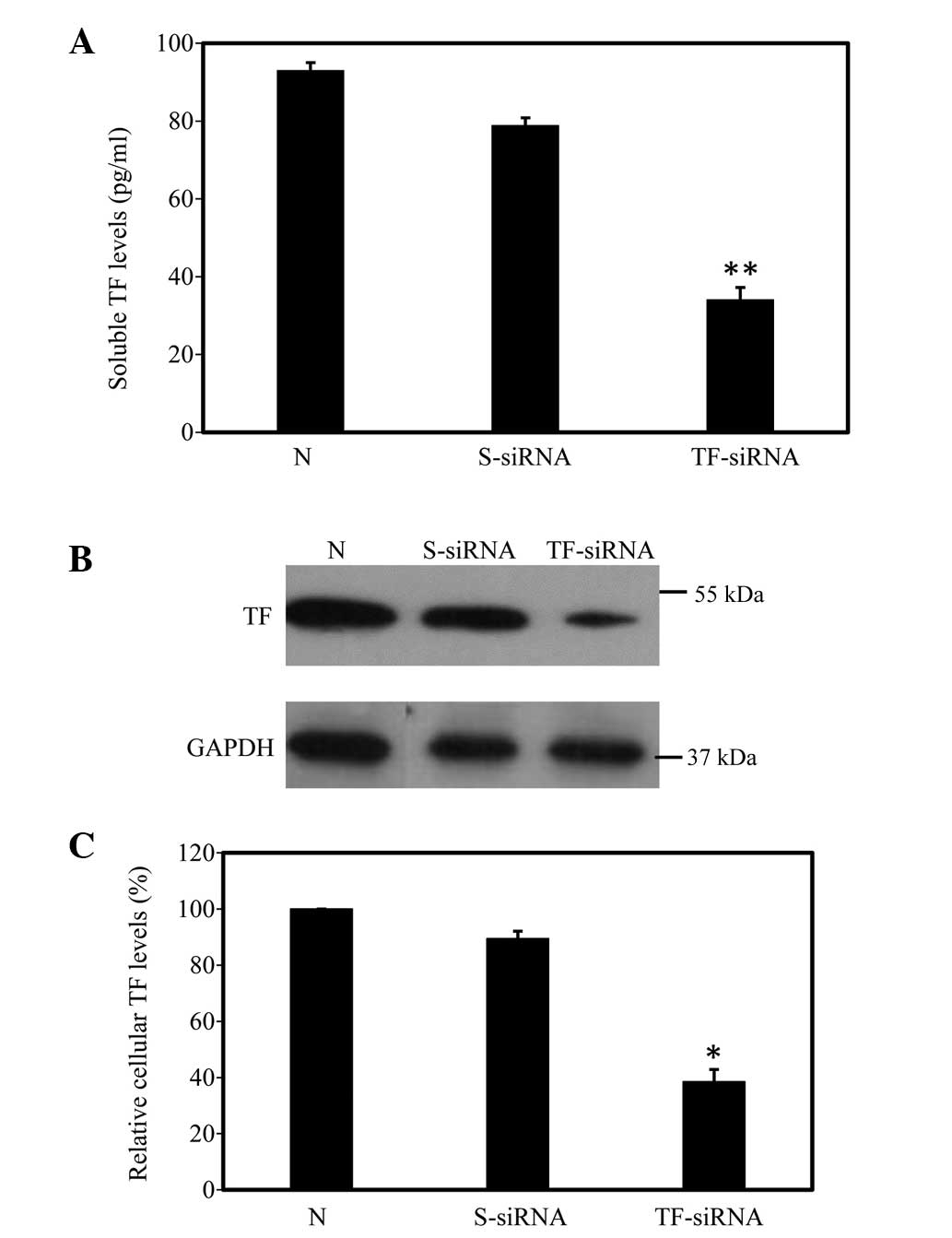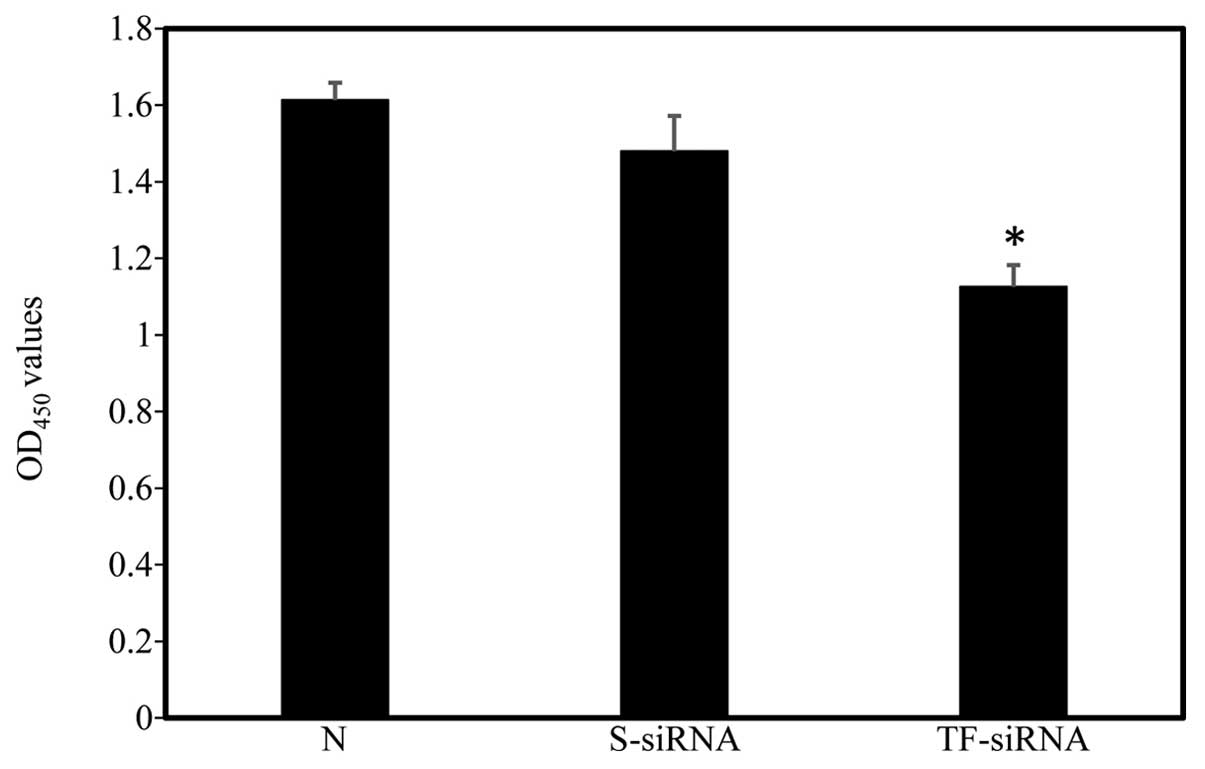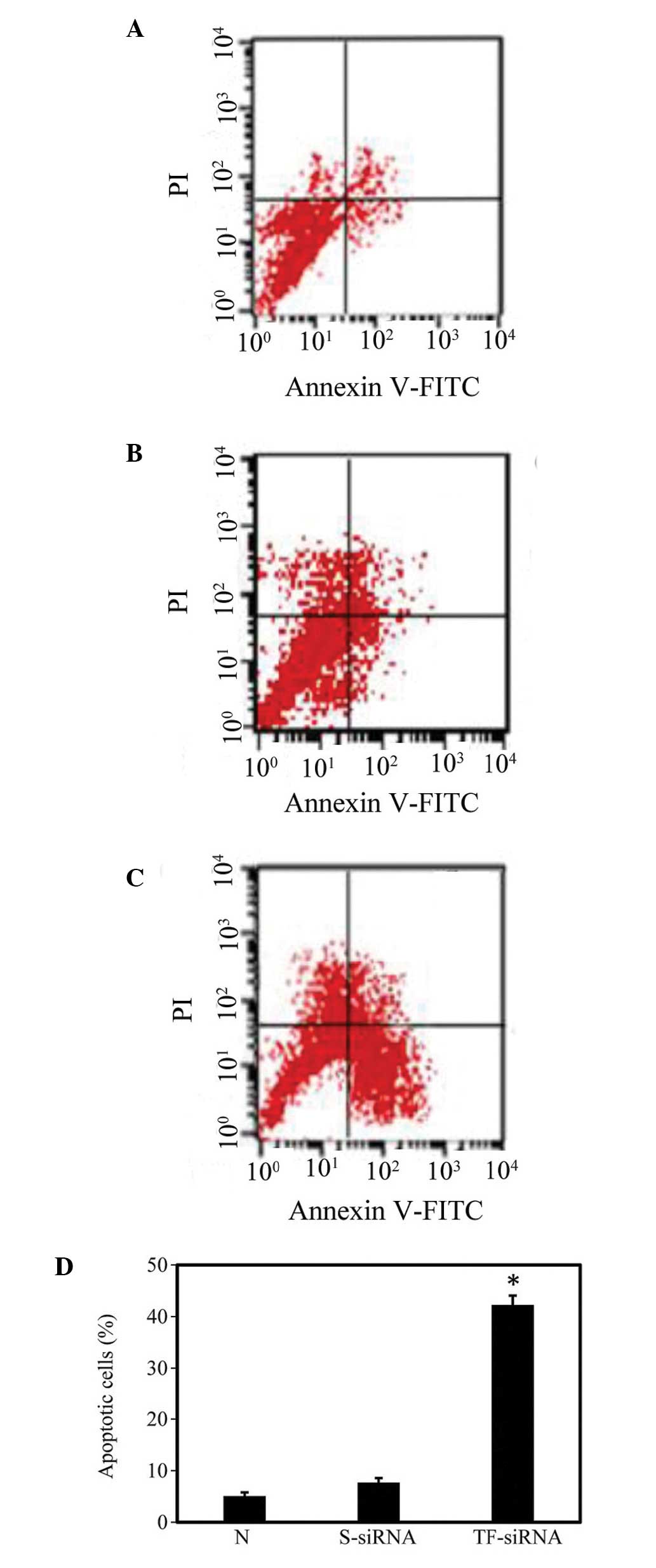|
1
|
Illum L: Chitosan and its use as a
pharmaceutical excipient. Pharm Res. 15:1326–1331. 1998. View Article : Google Scholar : PubMed/NCBI
|
|
2
|
Felt O, Buri P and Gurny R: Chitosan: A
unique polysaccharide for drug delivery. Drug Dev Ind Pharm.
24:979–993. 1998. View Article : Google Scholar
|
|
3
|
Kumar MN, Muzzarelli RA, Muzzarelli C,
Sashiwa H and Domb AJ: Chitosan chemistry and pharmaceutical
perspectives. Chem Rev. 104:6017–6084. 2004. View Article : Google Scholar : PubMed/NCBI
|
|
4
|
Nafee N, Taetz S, Schneider M, Schaefer UF
and Lehr CM: Chitosan-coated PLGA nanoparticles for DNA/RNA
delivery: Effect of the formulation parameters on complexation and
transfection of antisense oligonucleotides. Nanomedicine.
3:173–183. 2007. View Article : Google Scholar : PubMed/NCBI
|
|
5
|
Köping-Höggård M, Tubulekas I, Guan H,
Edwards K, Nilsson M, Vårum KM and Artursson P: Chitosan as a
nonviral gene delivery system. Structure-property relationships and
characteristics compared with polyethylenimine in vitro and after
lung administration in vivo. Gene Ther. 8:1108–1121. 2001.
View Article : Google Scholar : PubMed/NCBI
|
|
6
|
Katas H and Alpar HO: Development and
characterisation of chitosan nanoparticles for siRNA delivery. J
Control Release. 115:216–225. 2006. View Article : Google Scholar : PubMed/NCBI
|
|
7
|
Dang JM, Sun DD, Shin-Ya Y, Sieber AN,
Kostuik JP and Leong KW: Temperature-responsive hydroxybutyl
chitosan for the culture of mesenchymal stem cells and
intervertebral disk cells. Biomaterials. 27:406–418. 2006.
View Article : Google Scholar
|
|
8
|
Molinaro G, Leroux JC, Damas J and Adam A:
Biocompatibility of thermosensitive chitosan-based hydrogels: An in
vivo experimental approach to injectable biomaterials.
Biomaterials. 23:2717–2722. 2002. View Article : Google Scholar : PubMed/NCBI
|
|
9
|
Wei CZ, Hou CL, Gu QS, Jiang LX, Zhu B and
Sheng AL: A thermosensitive chitosan-based hydrogel barrier for
post-operative adhesions' prevention. Biomaterials. 30:5534–5540.
2009. View Article : Google Scholar : PubMed/NCBI
|
|
10
|
Mackman N, Morrissey JH, Fowler B and
Edgington TS: Complete sequence of the human tissue factor gene, a
highly regulated cellular receptor that initiates the coagulation
protease cascade. Biochemistry. 28:1755–1762. 1989. View Article : Google Scholar : PubMed/NCBI
|
|
11
|
Wilcox JN, Smith KM, Schwartz SM and
Gordon D: Localization of tissue factor in the normal vessel wall
and in the atherosclerotic plaque. Proc Natl Acad Sci USA.
86:2839–2843. 1989. View Article : Google Scholar : PubMed/NCBI
|
|
12
|
Schecter AD, Giesen PL, Taby O, Rosenfield
CL, Rossikhina M, Fyfe BS, Kohtz DS, Fallon JT, Nemerson Y and
Taubman MB: Tissue factor expression in human arterial smooth
muscle cells. TF is present in three cellular pools after growth
factor stimulation. J Clin Invest. 100:2276–2285. 1997. View Article : Google Scholar : PubMed/NCBI
|
|
13
|
Camera M, Giesen PL, Fallon J, Aufiero BM,
Taubman M, Tremoli E and Nemerson Y: Cooperation between VEGF and
TNF-alpha is necessary for exposure of active tissue factor on the
surface of human endothelial cells. Arterioscler Thromb Vasc Biol.
19:531–537. 1999. View Article : Google Scholar : PubMed/NCBI
|
|
14
|
Bavendiek U, Libby P, Kilbride M, Reynolds
R, Mackman N and Schönbeck U: Induction of tissue factor expression
in human endothelial cells by CD40 ligand is mediated via activator
protein 1, nuclear factor kappa B and Egr-1. J Biol Chem.
277:25032–25039. 2002. View Article : Google Scholar : PubMed/NCBI
|
|
15
|
Kawano H, Tsuji H, Nishimura H, Kimura S,
Yano S, Ukimura N, Kunieda Y, Yoshizumi M, Sugano T, Nakagawa K, et
al: Serotonin induces the expression of tissue factor and
plasminogen activator inhibitor-1 in cultured rat aortic
endothelial cells. Blood. 97:1697–1702. 2001. View Article : Google Scholar : PubMed/NCBI
|
|
16
|
Cermak J, Key NS, Bach RR, Balla J, Jacob
HS and Vercellotti GM: C-reactive protein induces human peripheral
blood monocytes to synthesize tissue factor. Blood. 82:513–520.
1993.PubMed/NCBI
|
|
17
|
Mach F, Schönbeck U, Bonnefoy JY, Pober JS
and Libby P: Activation of monocyte/macrophage functions related to
acute atheroma complication by ligation of CD40: Induction of
collagenase, stromelysin and tissue factor. Circulation.
96:396–399. 1997. View Article : Google Scholar : PubMed/NCBI
|
|
18
|
He M, He X, Xie Q, Chen F and He S:
Angiotensin II induces the expression of tissue factor and its
mechanism in human monocytes. Thromb Res. 117:579–590. 2006.
View Article : Google Scholar
|
|
19
|
Wada H, Kaneko T, Wakita Y, Minamikawa K,
Nagaya S, Tamaki S, Deguchi K and Shirakawa S: Effect of
lipoproteins on tissue factor activity and PAI-II antigen in human
monocytes and macrophages. Int J Cardiol. 47(Suppl 1): S21–S25.
1994. View Article : Google Scholar : PubMed/NCBI
|
|
20
|
Giesen PL, Rauch U, Bohrmann B, Kling D,
Roqué M, Fallon JT, Badimon JJ, Himber J, Riederer MA and Nemerson
Y: Blood-borne tissue factor: Another view of thrombosis. Proc Natl
Acad Sci USA. 96:2311–2315. 1999. View Article : Google Scholar : PubMed/NCBI
|
|
21
|
Bogdanov VY, Balasubramanian V, Hathcock
J, Vele O, Lieb M and Nemerson Y: Alternatively spliced human
tissue factor: A circulating, soluble, thrombogenic protein. Nat
Med. 9:458–462. 2003. View
Article : Google Scholar : PubMed/NCBI
|
|
22
|
Szotowski B, Antoniak S, Poller W,
Schultheiss HP and Rauch U: Procoagulant soluble tissue factor is
released from endothelial cells in response to inflammatory
cytokines. Circ Res. 96:1233–1239. 2005. View Article : Google Scholar : PubMed/NCBI
|
|
23
|
Day SM, Reeve JL, Pedersen B, Farris DM,
Myers DD, Im M, Wakefield TW, Mackman N and Fay WP: Macrovascular
thrombosis is driven by tissue factor derived primarily from the
blood vessel wall. Blood. 105:192–198. 2005. View Article : Google Scholar
|
|
24
|
Soejima H, Ogawa H, Yasue H, Kaikita K,
Takazoe K, Nishiyama K, Misumi K, Miyamoto S, Yoshimura M, Kugiyama
K, et al: Angiotensin-converting enzyme inhibition reduces monocyte
chemoattractant protein-1 and tissue factor levels in patients with
myocardial infarction. J Am Coll Cardiol. 34:983–988. 1999.
View Article : Google Scholar : PubMed/NCBI
|
|
25
|
Koh KK, Chung WJ, Ahn JY, Han SH, Kang WC,
Seo YH, Ahn TH, Choi IS and Shin EK: Angiotensin II type 1 receptor
blockers reduce tissue factor activity and plasminogen activator
inhibitor type-1 antigen in hypertensive patients: A randomized,
double-blind, placebo-controlled study. Atherosclerosis.
177:155–160. 2004. View Article : Google Scholar : PubMed/NCBI
|
|
26
|
Mälarstig A, Tenno T, Johnston N,
Lagerqvist B, Axelsson T, Syvänen AC, Wallentin L and Siegbahn A:
Genetic variations in the tissue factor gene are associated with
clinical outcome in acute coronary syndrome and expression levels
in human monocytes. Arterioscler Thromb Vasc Biol. 25:2667–2672.
2005. View Article : Google Scholar : PubMed/NCBI
|
|
27
|
Ott I, Koch W, von Beckerath N, de Waha R,
Malawaniec A, Mehilli J, Schömig A and Kastrati A: Tissue factor
promotor polymorphism-603 A/G is associated with myocardial
infarction. Atherosclerosis. 177:189–191. 2004. View Article : Google Scholar : PubMed/NCBI
|
|
28
|
Pyo RT, Sato Y, Mackman N and Taubman MB:
Mice deficient in tissue factor demonstrate attenuated intimal
hyperplasia in response to vascular injury and decreased smooth
muscle cell migration. Thromb Haemost. 92:451–458. 2004.PubMed/NCBI
|
|
29
|
Giannarelli C, Alique M, Rodriguez DT,
Yang DK, Jeong D, Calcagno C, Hutter R, Millon A, Kovacic JC, Weber
T, et al: Alternatively spliced tissue factor promotes plaque
angiogenesis through the activation of hypoxia-inducible factor-1α
and vascular endothelial growth factor signaling. Circulation.
130:1274–1286. 2014. View Article : Google Scholar : PubMed/NCBI
|
|
30
|
Steffel J, Lüscher TF and Tanner FC:
Tissue factor in cardiovascular diseases: Molecular mechanisms and
clinical implications. Circulation. 113:722–731. 2006. View Article : Google Scholar : PubMed/NCBI
|
|
31
|
Mao S, Sun W and Kissel T: Chitosan-based
formulations for delivery of DNA and siRNA. Adv Drug Deliv Rev.
62:12–27. 2010. View Article : Google Scholar
|
|
32
|
Zhang K, Qian Y, Wang H, Fan L, Huang C,
Yin A and Mo X: Genipin-crosslinked silk fibroin/hydroxybutyl
chitosan nano-fibrous scaffolds for tissue-engineering application.
J Biomed Mater Res A. 95:870–881. 2010. View Article : Google Scholar : PubMed/NCBI
|
|
33
|
Chen B, Dang J, Tan TL, Fang N, Chen WN,
Leong KW and Chan V: Dynamics of smooth muscle cell deadhesion from
thermosensitive hydroxybutyl chitosan. Biomaterials. 28:1503–1514.
2007. View Article : Google Scholar
|
|
34
|
Morris KV, Chan SW, Jacobsen SE and Looney
DJ: Small interfering RNA-induced transcriptional gene silencing in
human cells. Science. 305:1289–1292. 2004. View Article : Google Scholar : PubMed/NCBI
|
|
35
|
Ryther RC, Flynt AS, Phillips JA III and
Patton JG: SiRNA therapeutics: Big potential from small RNAs. Gene
Ther. 12:5–11. 2005. View Article : Google Scholar
|
|
36
|
Kanasty R, Dorkin JR, Vegas A and Anderson
D: Delivery materials for siRNA therapeutics. Nat Mater.
12:967–977. 2013. View
Article : Google Scholar : PubMed/NCBI
|













